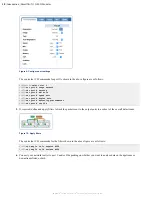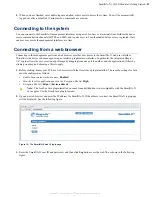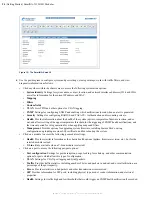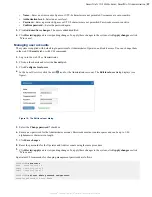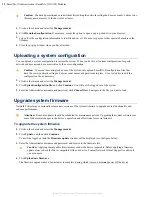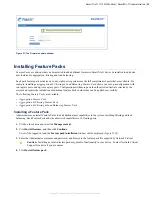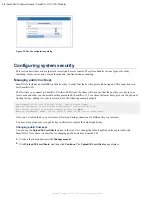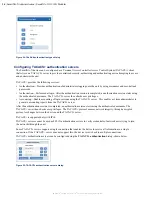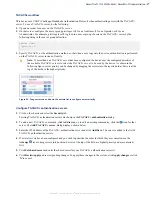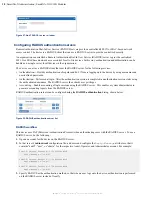
24
| Getting Started | SmartNA-X 1G/10G Modular
SmartNA-X
™
1G/10G User Guide 1.4
©
2015 Network Critical Solutions Limited
Figure 15: The SmartNA-X web UI
4.
Use the port diagram to configure system and port settings, create port maps, work with traffic filters, and view
diagnostic information as follows:
• Click anywhere within the chassis area to access the following system-wide options:
•
System identity
Settings for system name, contact, location, and network interface addresses (IPv4 and IPv6),
as well as information for the current IP address and MAC.
•
Mapping
•
Filters
•
Custom fields
•
VLAN
Lists TPID and other options for VLAN tagging.
•
SNMP
Settings for configuring SNMP and enabling which notifications to send when an alert is generated.
•
Security
Settings for configuring RADIUS and Authentication and Accounting servers.
•
Health
Provides information about the health of the system (uptime, temperature, firmware revision, and so
on), and allows setting of the upper temperature threshold for the triggering of SNMP health notifications, and
the timeout period for rule generation for when applying maps and filters.
•
Management
Provides options for upgrading system firmware, installing Feature Packs, saving
configurations, uploading a custom SSL certificate, and for rebooting the system.
• Click on a module to access the following per-module settings:
•
Health
Provides similar information as the chassis health options (uptime, firmware revision, etc.), but for the
selected module instead.
•
V-Line
(Only available when a V-Line module is selected)
• Click on a port to access the following per-port options:
•
Port configuration
Settings for port description, usage, locking, force link up, and other communication
options for ports which allow this type of configuration.
•
VLAN
Settings for VLAN port tagging and QinQ packets.
•
Traffic
Provides traffic statistics, including number of bytes and packets in and out, and overall utilization as a
percentage of the port capacity.
•
Errors
Provides statistics on bad packets and other transmission errors received.
•
SFP
Provides information for SFP ports, including physical type, model, vendor information, and electrical
properties.
•
Health
Settings for traffic high and low thresholds that would trigger an SNMP health notification if exceeded.









